Antique Archaic Jade from The Robert and Jean-Pierre Rousset Collection sold at Bonhams Cornette de Saint Cyr Paris
Lot 201. Three archaic jade pendants, Shang-Han Dynasty (circa 1500-1050 BC/206 BC-220 AD). The larger bird 7cm (2 3/4in) long; the smaller bird 5.5cm (2 1/4in) long; the cicada 6.3cm (2 1/2in) long. (3). Sold for 10,837.50 € (Estimate €1,500-2,000). Photo Fabrice Gousset.
Comprising a stylised bird pendant, the stone of olive, grey and creamy hue, incised to each side with the wings folded back, tail feathers horizontal and the face with large eyes facing directly ahead, Shang dynasty (circa 1500-1050 BC); a creamy russet jade bird pendant, incised with linear designs to denote the plumage, Shang dynasty (circa 1500-1050 BC); and a calcified pale olive-green cicada, simply incised to the lower body to simulate the carapace, Han dynasty (206 BC-220 AD).
Provenance: Robert Rousset, Paris (1901-1981), acquired prior to 1935
Jean-Pierre Rousset, Paris (1936-2021)
Lot 202. Four archaic jade pendants, Shang-Eastern Zhou Dynasty (circa 1500-1050 BC/770-221 BC). The arched fish 8.5cm (3 3/8in) and 8.2cm (3 1/4in); the dragon pendant 9.5cm (3 3/4in) wide. (4). Sold for 5,737.50 € (Estimate €1,000-1,500). Photo Fabrice Gousset.
Comprising two part calcified jade arched fish-form pendants, Shang dynasty (circa 1500-1050 BC); a mottled dark grey-green straight fish-form pendant, Shang/early Western Zhou dynasty (12th-9th century BC); and a large dragon-form pendant, the serpentine body incised with scroll motifs, Eastern Zhou dynasty (770-221 BC).
Provenance: Robert Rousset, Paris (1901-1981), acquired prior to 1935
Jean-Pierre Rousset, Paris (1936-2021)
Note: For related jade fish pendants, Shang and Western Zhou dynasty, see Compendium of Collections in the Palace Museum: Jade 2 Xia, Shang and Zhou Dynasties, Beijing, 2011, nos.229-230, 233-234 and 299.
Lot 203. Five archaic jade pendants, Shang-Eastern Zhou Dynasty (circa 1500-1050 BC/770-221 BC). The dark green fish pendant 12cm (4 3/4in) long. (5). Sold for 16,575 € (Estimate €2,000-3,000). Photo Fabrice Gousset.
Comprising two elongated fish pendants of flattened form, of dark green and mottled creamy beige hue, Shang/early Western Zhou dynasty (circa 1500-1050 BC); a cream jade eel-form pendant carved in the round, Western Zhou dynasty (1050-771 BC); a small cream jade blade with bevelled edges and central ridge, Shang dynasty (circa 1500-1050 BC); and a grey and russet dragon-form pendant, huang, the serpentine body with four small circular apertures, carved to each side with comma-scrolls, Eastern Zhou dynasty (770-221 BC).
Provenance: Robert Rousset, Paris (1901-1981), acquired prior to 1935
Jean-Pierre Rousset, Paris (1936-2021)
Note: For related flattened jade fish pendants, Shang and Western Zhou dynasty, see Compendium of Collections in the Palace Museum: Jade 2 Xia, Shang and Zhou Dynasties, Beijing, 2011, nos.229-230, 233-234 and 299. Compare two eel-shaped pendants, Western Zhou dynasty, from the Henry Oppenheim collection, in the British Museum, London (acc.nos.1947,0712.460.a-b). See also a closely related jade dragon huang pendant, Eastern Zhou dynasty, from the Oscar Raphael collection, in the British Museum (acc.no.1945,1017.127).
Lot 204. Four archaic jade carvings, Shang-Han Dynasty (circa 1500-1050 BC/206 BC-220 AD). The largest cicada pendant 6.3cm (2 1/2in) long; the smaller cicada pendant 4.8cm (1 7/8in) long; the silkworm 4.5cm (1.3/4in); and the bead 2cm (3/4in) diam. (4). Sold for 19,125 € (Estimate €1,500-2,000). Photo Fabrice Gousset.
Comprising of a mottled pale green jade silkworm pendant, or arched form with a series of incised lines to the back to define the form, late Shang/Western Zhou dynasty (12th-9th century BC); a small calcified jade circular bead, incised to the rounded surface with a coiled dragon, the reverse flat, Zhou dynasty (1050-221 BC); a pale green jade cicada plaque, the stone with some mottled russet inclusions; and a dark green jade cicada plaque, the stone with mottled creamy calcification, Han dynasty (206 BC-220 AD).
Provenance: Robert Rousset, Paris (1901-1981), acquired prior to 1935
Jean-Pierre Rousset, Paris (1936-2021)
Note: See a related jade silkworm, late Shang/Western Zhou dynasty, from the Henry Oppenheim collection, in the British Museum, London (acc.no.1947,0712.463). Compare related jade carvings of cicadas, Han dynasty, illustrated in Compendium of Collections in the Palace Museum: Jade 4 Han, Wei, Jin, Southern and Northern Dynasties, Beijing, 2011, nos.121-147. Compare with a related group of three archaic jade carvings, Eastern Zhou/Han dynasty, which was sold at Bonhams London, 12 May 2022, lot 9.
Lot 206. An archaic jade sword chape, Han Dynasty (206 BC-220 AD); 5.5cm (2 1/8in) wide. Sold for 9,562.50 € (Estimate €800-1,200). Photo Fabrice Gousset.
Of trapezoidal form, with central circular aperture to the underside and flattened top, carved in low relief to each side with panels enclosing scrolling linear designs, the softly polished mottled creamy brown stone with some green flecking.
Provenance: Robert Rousset, Paris (1901-1981), acquired prior to 1935
Jean-Pierre Rousset, Paris (1936-2021)
Note: A related jade sword chape, Han dynasty, is illustrated by T.Fok, The Splendour of Jade: The Songzhutang Collection of Jade, Hong Kong, 2011, pl.67; and was later sold at Bonhams Hong Kong, 30 May 2017, lot 46.
Lot 207. A calcified jade carving of a pig, Han Dynasty (206 BC-220 AD). The pig 11.5cm (4 1/2in) long; the bangle 8.5cm (3 3/8in) diam. (2). Sold for 1,657.50 € (Estimate €800-1,200). Photo Fabrice Gousset.
The creamy calcified recumbent jade pig of elongated form, the ears tucked back, the face with prominent snout and incised furrowed brow, the eyes outlined with red pigment; together with an archaistic jade bangle, late Qing dynasty/Republic period (1800-1949), of mottled greyish-green hue, carved with five taotie masks within key-fret borders.
Provenance: Robert Rousset, Paris (1901-1981), acquired prior to 1935
Jean-Pierre Rousset, Paris (1936-2021)
Note: It was believed that jade pigs were placed for protection of the dead. This practice is connected with the Daoist belief, as stated in the 4th century text Baopuzi by Ge Hong, 'when gold and jade plug the nine orifices, man dies but his body does not decay'. Pairs of jade pigs were placed in the hands of the deceased. Funerary jade pigs from this period are often carved with a few deep calculated cuts, known as the 'Eight Cuts of Han'. Compare similarly carved jade pigs, Han dynasty, illustrated in the Compendium of Collections in the Palace Museum: Jade 4, Beijing, 2011, p.130, nos.152-153.
Bonhams Cornette de Saint Cyr Paris. The Robert and Jean-Pierre Rousset Collection of Asian Art: A Century of Collecting - Part 1. Paris, 25 october 2022

/https%3A%2F%2Fprofilepics.canalblog.com%2Fprofilepics%2F1%2F0%2F100183.jpg)
/https%3A%2F%2Fstorage.canalblog.com%2F03%2F02%2F119589%2F96711876_o.jpg)
/https%3A%2F%2Fstorage.canalblog.com%2F11%2F31%2F119589%2F94773502_o.jpg)
/https%3A%2F%2Fstorage.canalblog.com%2F20%2F83%2F119589%2F94772815_o.jpg)
/https%3A%2F%2Fstorage.canalblog.com%2F26%2F72%2F119589%2F75604929_o.jpg)
/https%3A%2F%2Fstorage.canalblog.com%2F59%2F60%2F119589%2F26458628_o.jpg)
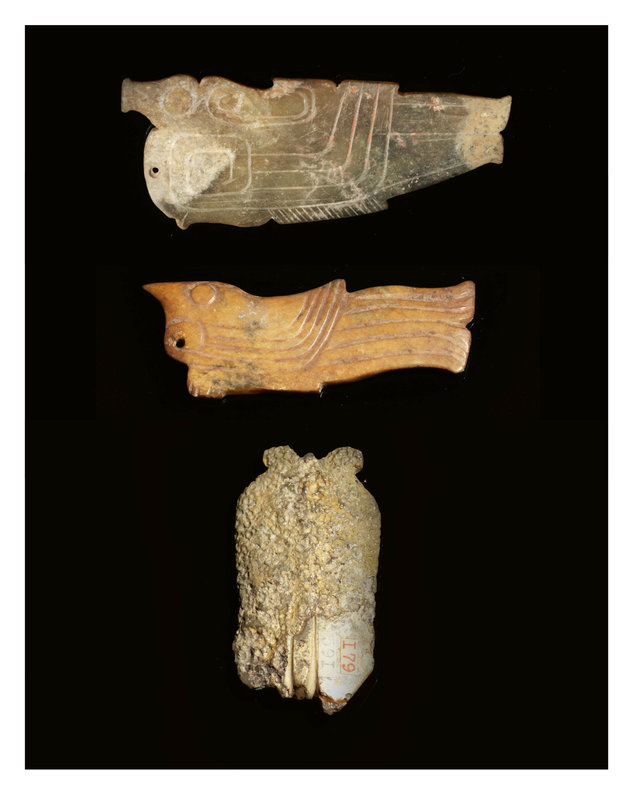




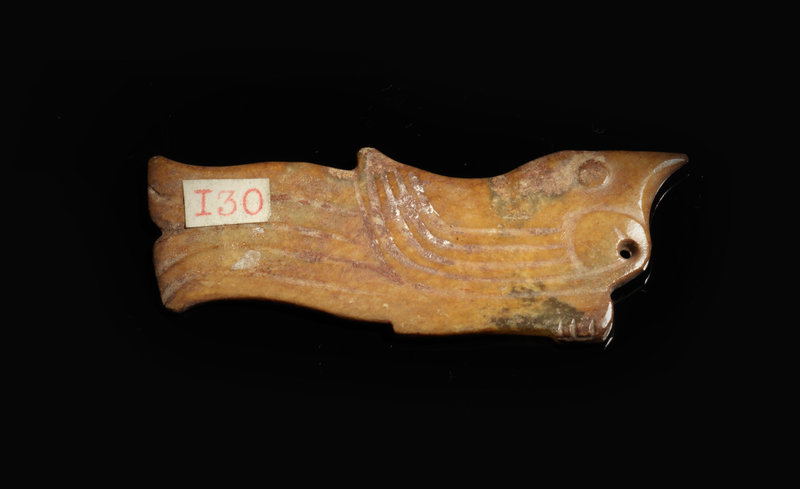
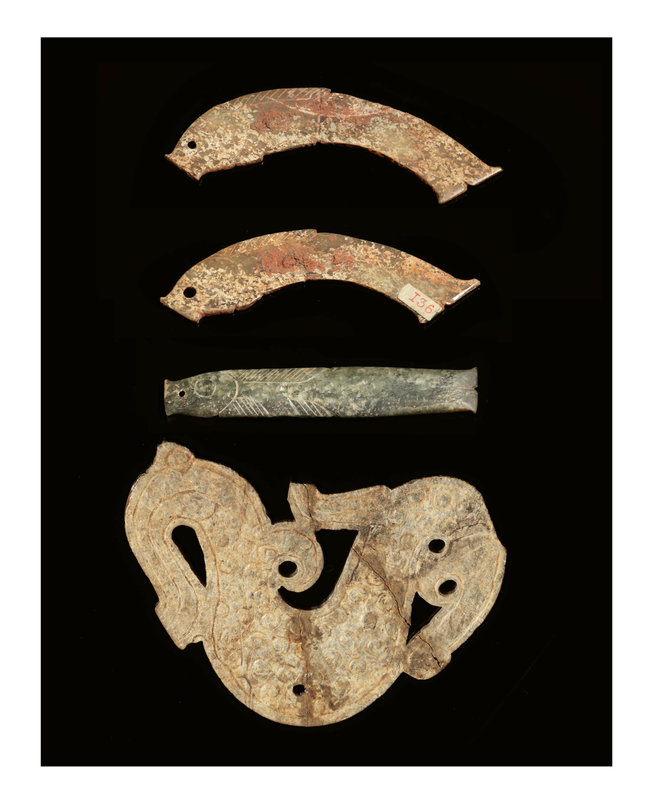





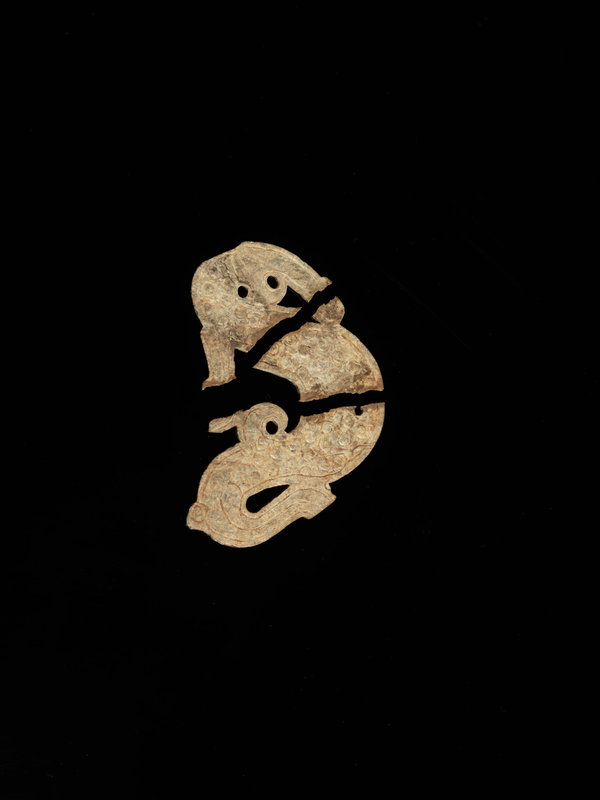
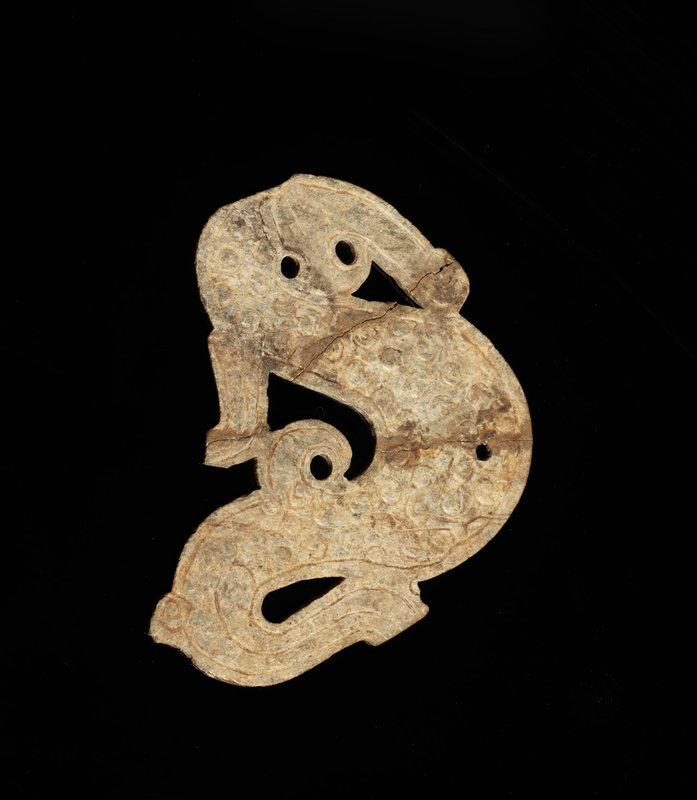

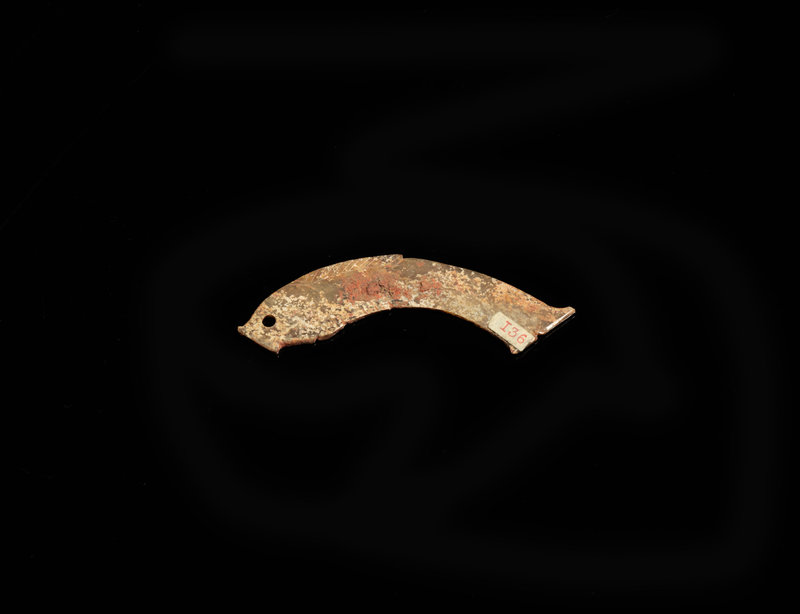





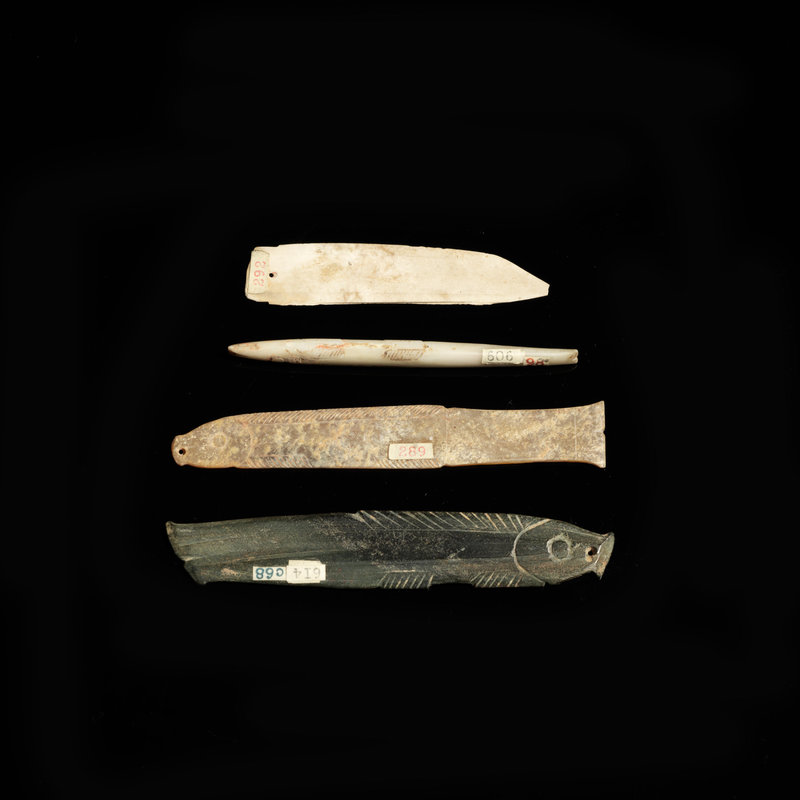

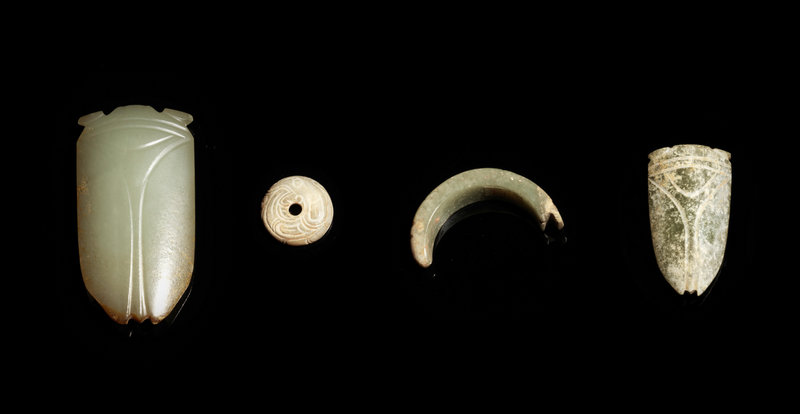

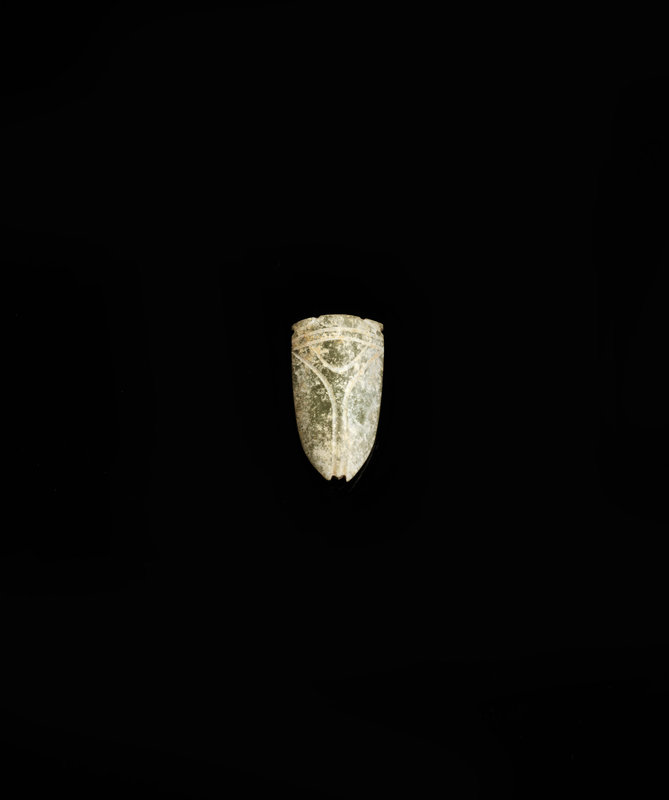



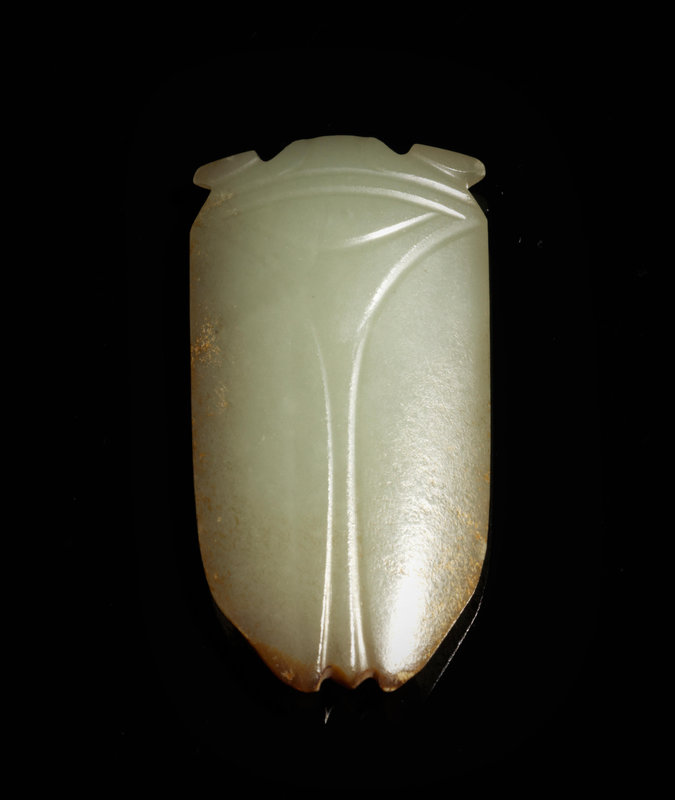




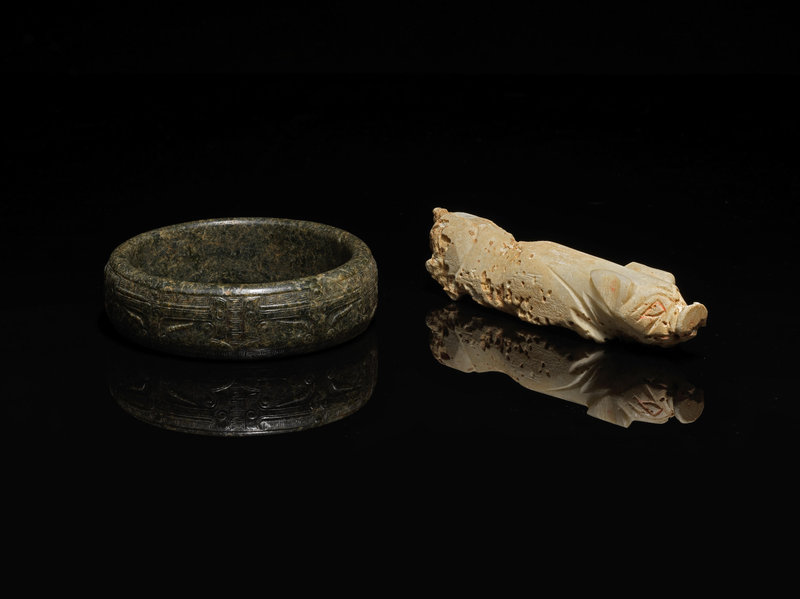
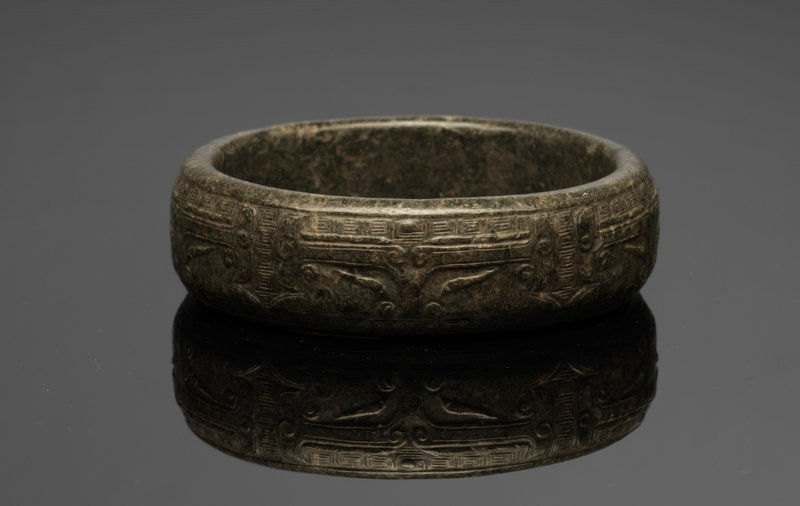


/http%3A%2F%2Fstorage.canalblog.com%2F52%2F93%2F119589%2F129024426_o.jpg)
/http%3A%2F%2Fstorage.canalblog.com%2F04%2F86%2F119589%2F127871115_o.jpg)
/http%3A%2F%2Fstorage.canalblog.com%2F77%2F65%2F119589%2F127869766_o.jpg)
/http%3A%2F%2Fstorage.canalblog.com%2F93%2F30%2F119589%2F126677681_o.jpg)